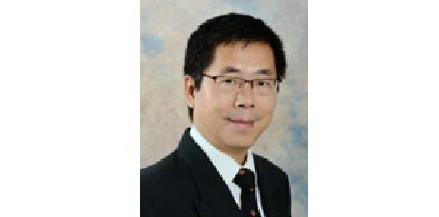报告时间:2015年4月22日15:00
报告地点:新主楼B506
报告人:Prof. Zhou Wei, School of Mechanical & Aerospace Engineering, Nanyang Technological University, Singapore
报告摘要:
纳米尺度的结构有很多应用。光学投影刻蚀技术可以用来生产特征尺寸远低于100nm的材料。然而,刻蚀技术存在的难度、耗费的时间、过高的成本、设计和掩体的修复等问题,使得OPL技术不适合探索纳米结构的创新应用。我们成功使用30-50 keV Ga+聚焦离子束(FIB)作为一次无掩模无阻抗纳米制备工具,制作了纳米尺度的周期性柱状物,方格和光栅。我们针对各种材料做了研究(包括纯金属,半导体元素及其化合物),确定了表面图案自发形成机理。我们成功地提出现象模型,通过使用原位实时次级离子和二次电子成像技术监测表面图案演化模式,来描述一些纳米结构的自组装机理。最后,给出有关纳米结构用于特定站点的材料微观分析和制造新型纳米等离子体透镜制造的实例。
Nanoscale structures have many applications. The form of lithography used in the semiconductor industry, optical projection lithography (OPL), can be used to produce feature sizes well below 100 nm. However, the difficulty, time, and prohibitively high cost associated with designing and repairing a mask makes OPL unsuitable for exploring innovative applications of nanostructures. We demonstrate the successful use of 30-50 keV Ga+ Focused Ion Beam (FIB) as a one-step maskless and resistless nanofabrication tool for making nanoscale periodic pillars, wells, and gratings. We studied a wide range of materials (including pure metals, semiconductor elements and compounds) and identified the major causes for the spontaneous formation of surface patterns. We succeeded in putting forward phenomenogical model describing mechanisms of self-organization for some of the nanostructures through monitoring evolution of the surface patterns using in-situ real-time secondary ion and secondary electron imaging. Finally, examples are given on use of the nanostructures for site-specific microscopic analyses of materials and for making a novel plasmonic nano-lens.
报告人简介:
周伟博士是南洋理工大学(NTU)机械宇航学院终身教授,新加坡国家标准化ISO/TC 技术委员会主席,新加坡焊接协会(Singapore Welding Society, SWS)会士(Fellow)、副主席。1987年毕业于清华大学机械系,1991年获颁剑桥大学博士学位,1992年受聘为德国弗琅荷费材料力学研究所客座研究员,1992年至今在新加坡南洋理工大学任教,于2008年初受聘为终身教授,并担任机械宇航学院精密加工及纳米制造技术中心主任多年,2002年3月至12月任哈佛大学访问学者,2013年12月至2014年6月任剑桥大学丘吉尔学院访问院士。周伟教授长期从事先进材料与精密加工等方面的研究和人才培养,多次作为首席科学家承担先进电子封装技术、超轻镁合金研发、纳米制造以及增材制造技术等项目,先后培养了二十余名博士后和博士研究生。在国际期刊上发表及国际会议上宣读的论文200余篇,其中SCI论文140余篇,他引3000次(最高单篇引用达400多次)。
